Affiliate links on Android Authority may earn us a commission. Learn more.
Spotify vs YouTube Music vs Apple Music: Which one is best
Updated on February 29, 2024
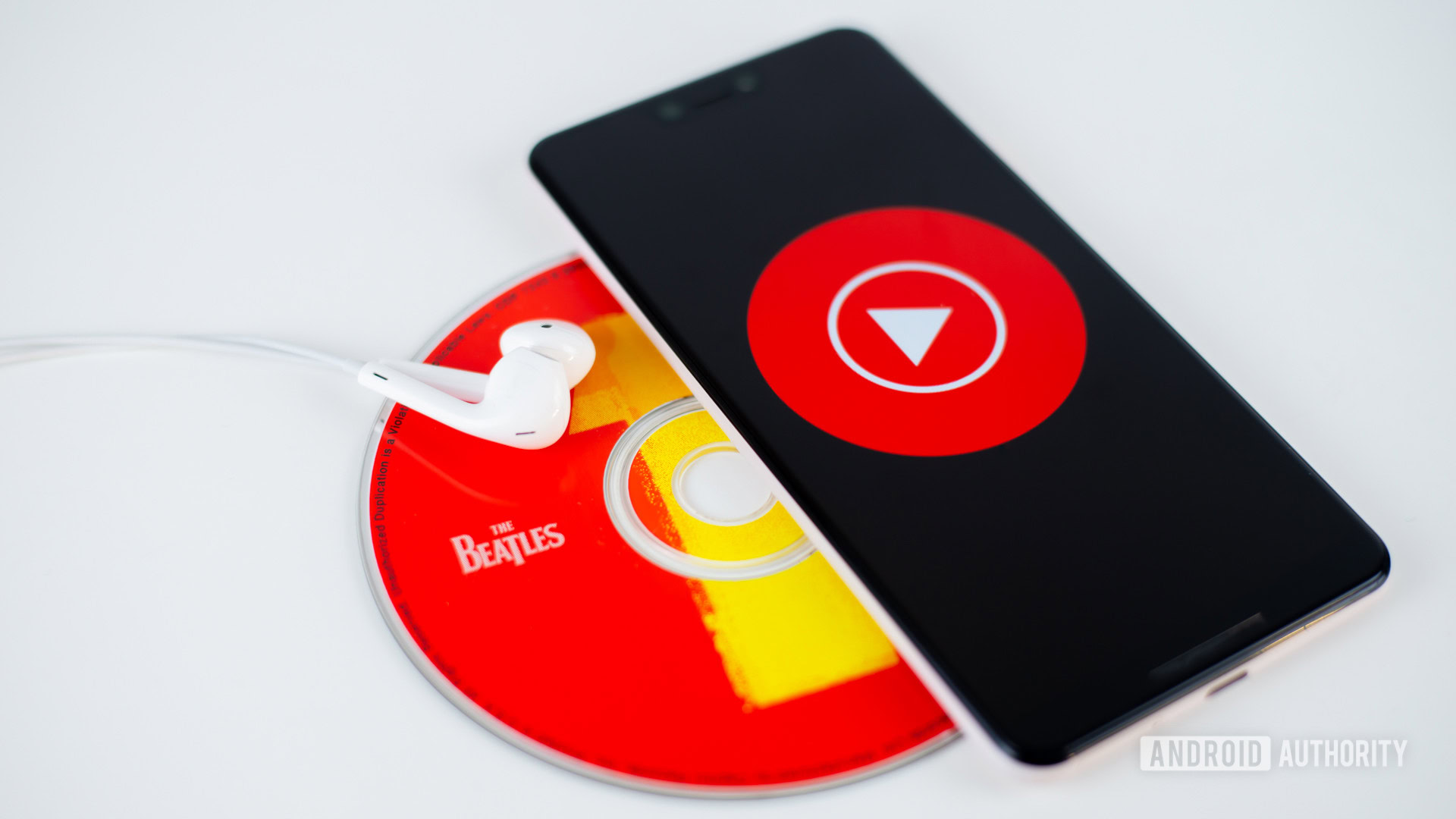
Music streaming is the main way people listen to music these days. Several excellent music streaming apps are available to the public, each with its own features. However, it seems most people gravitate toward Spotify, Apple Music, and YouTube Music. There are many reasons for this, and we’ll go into that in this in-depth comparison. Here’s everything you need to know about Spotify vs YouTube Music vs Apple Music. Hopefully, we can help you choose the one you want.
Editor’s Note: All of these services were tested on Android, with a Pixel 6 running Android 13. We believe our findings are largely applicable to iOS and other platforms as well.
QUICK ANSWER
A lot of this comes down to preferences. Spotify has excellent social and discovery features. Apple Music has high-quality music free of charge, which is great for audiophiles. YouTube Music has the largest library, the ability to upload your own music, and excellent integration with YouTube.
JUMP TO KEY SECTIONS
Basic comparison and stats
| Spotify | Apple Music | YouTube Music | |
|---|---|---|---|
Price (per month) | Spotify $4.99 (student) $9.99 (individual) $12.99 (family, 2 accounts) $15.99 (family, 6 accounts) | Apple Music $5.99 (student) $10.99 (individual) $16.99 (family, 6 accounts) | YouTube Music $4.99 (student) $9.99 (individual) $14.99 (family, 5 accounts) ----- $11.99 (individual, includes YouTube Premium) $22.99 (family, 5 accounts, includes YouTube Premium) $6.99 (student, includes YouTube Premium) |
Is there a free option? | Spotify Yes. | Apple Music No. | YouTube Music Yes. |
Free account limitations | Spotify Advertising. Limited skips. Albums play in shuffle mode only. Some new tracks are premium-exclusive for a limited time. No offline listening. No on-demand playback on mobile. | Apple Music N/A | YouTube Music Advertising. No offline listening. All song selections are played on shuffle. No background play on mobile. |
Supported platforms | Spotify Android, iOS PC, Mac, Web browsers Xbox, PlayStation Most smart TVs Android Auto, Apple CarPlay Google Assistant, Amazon Alexa, Siri Apple Watch, Wear OS | Apple Music Android, iOS Mac, Web browsers Android Auto, Apple CarPlay Most smart TVs Xbox, PlayStation Google Assistant, Amazon Alexa, Siri Apple Watch | YouTube Music Android, iOS Web browsers Android Auto, Apple CarPlay Some smart TVs Google Assistant, Amazon Alexa, Siri Wear OS, Apple Watch |
Catalog size | Spotify 80 million tracks | Apple Music 70 million tracks | YouTube Music 80 million tracks plus whatever you can find on regular YouTube. |
Podcast support | Spotify Yes, roughly 3.6 million. | Apple Music No, Apple split podcasts off to the Apple Podcasts app. | YouTube Music No. |
Audio quality | Spotify 24 Kbps (Low) 96 Kbps (Normal) 160 Kbps (High) 320 Kbps (Very high)(premium only) | Apple Music 128 Kbps (Normal) 256 Kbps (High) | YouTube Music 48 Kbps (Low) 128 Kbps (Normal) 256 Kbps (High) |
Is there a Hi-Fi option? | Spotify In progress, but not available to the public yet. | Apple Music Yes. | YouTube Music No. |
Hi-Fi music quality | Spotify 16-bit / 44.1 kHz (CD quality) | Apple Music Up to 24-bit / 192 kHz | YouTube Music N/A |
Hi-Fi extra price? | Spotify Unknown. | Apple Music Included with the base subscription. | YouTube Music N/A |
End of the year roundup? | Spotify Yes, Spotify Wrapped releases in December. | Apple Music Yes, Apple Music Replay updates weekly and resets every year. | YouTube Music Yes, YouTube Music Recap launches in December. |
Number of subscribers | Spotify 365 million as of 2021. | Apple Music 88 million as of 2021. | YouTube Music 80 million (between YouTube and YouTube Music) as of 2022. |
Additional features | Spotify Spotify Kids support for family plans. Spatial audio. Ambient sound playlists. Audiobooks. Curated playlists. Discover playlists. Collaborative playlists. Offline music. | Apple Music Spatial audio with head tracking. Curated playlists. Discovery playlists. Live radio stations. Upload up to 100,000 of your own songs. Offline music. | YouTube Music Full YouTube integration. Collaborative playlists. Upload 100,000 of your own songs. Curated playlists. Discovery playlists. Offline music. |
Spotify pros and cons
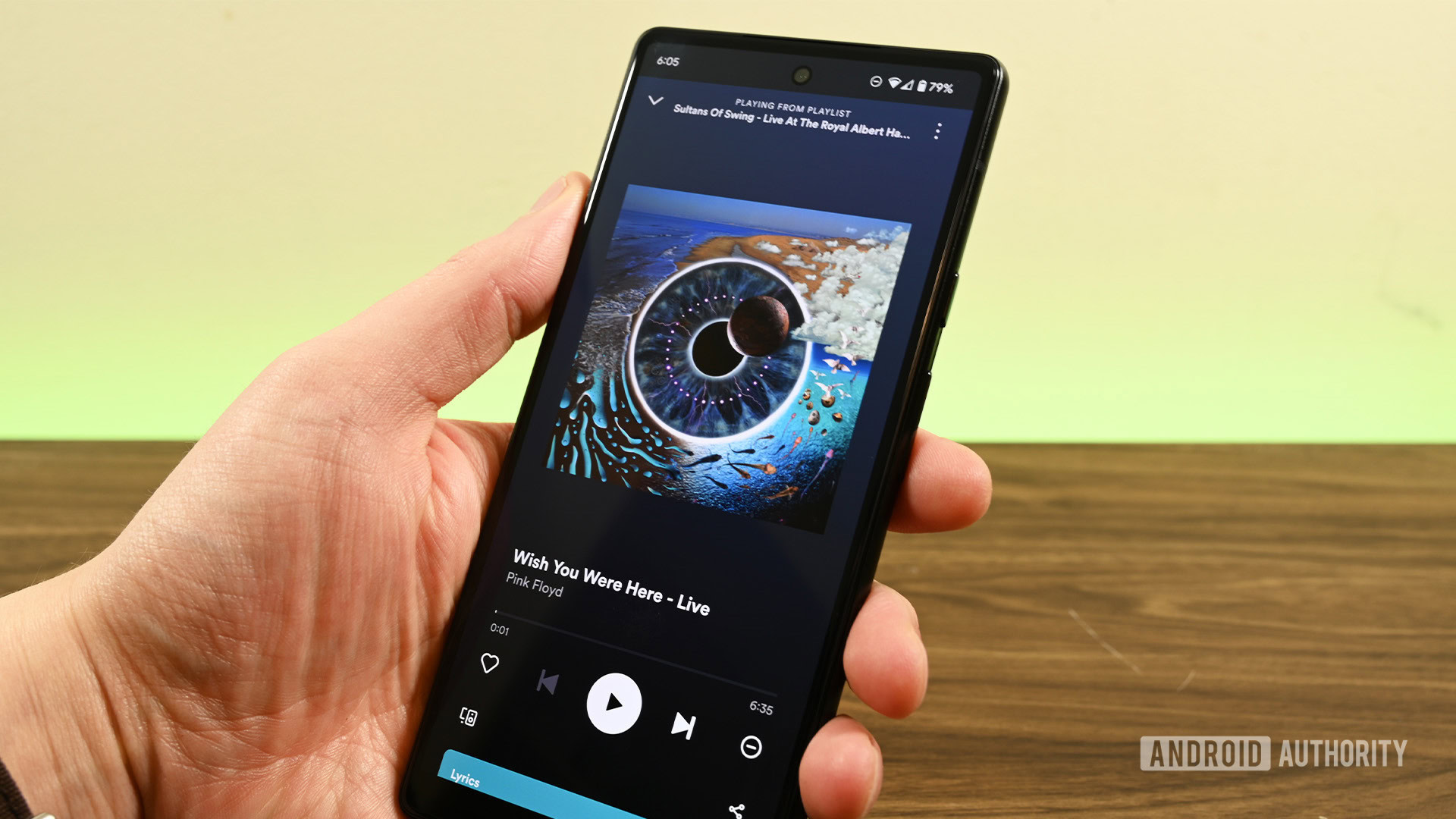
What we like:
- Excellent library of songs.
- Excellent discoverability and social features.
- The app is easy to use and get used to.
- The extra features, like the lyrics, are top-notch.
- Podcasts and audiobooks round out a full media experience.
- Compatible with almost everything.
What we don’t like:
- Hi-Fi option is taking an eternity to launch, and audio quality is otherwise middle of the road.
- The free version on mobile is notably worse than free Spotify on other platforms.
- The search function is a little cluttered.
- Integration with your existing library is just okay.
Spotify is the most popular music streaming service in the world for a reason. When you open the app, you’re met with a simple UI that takes you exactly where you want to go. The library lets you create playlists or follow individual artists, while the home section is filled with playlists catered to your tastes. The lo-fi, all-black UI keeps distractions at bay so you can just chill and listen to music.
The only negative aspect of the app, in terms of usability, is the search function. It works really well if you’re searching for a podcast or a song. However, it can feel cluttered occasionally if you’re searching for a specific live performance or something more obscure.
Spotify is familiar, comfortable, easy to use, and gets the job done, perhaps more so than any other music service.
The features are quite nice, even if most people don’t use all of them. There are too many to list here, but a few neat features are that it integrates with cars, includes things like gapless playback, and is compatible with basically every smart thing you can buy. Creating and sharing playlists is so easy that it’s silly, and the developers have done a great job making Spotify function without adding a bunch of extra nonsense.
There are only two places where Spotify has obvious weaknesses. The sound quality is just fine for most car stereos and Bluetooth headphones. That said, the audio quality is pretty middle-of-the-road compared to some others. It’s not the first service we’d recommend to audiophiles. Additionally, those who opt for the free version are basically only allowed to listen to playlists. We think the free version on mobile is a little too barebones. Otherwise, Spotify is comfortable, functional, and good.
Apple Music pros and cons
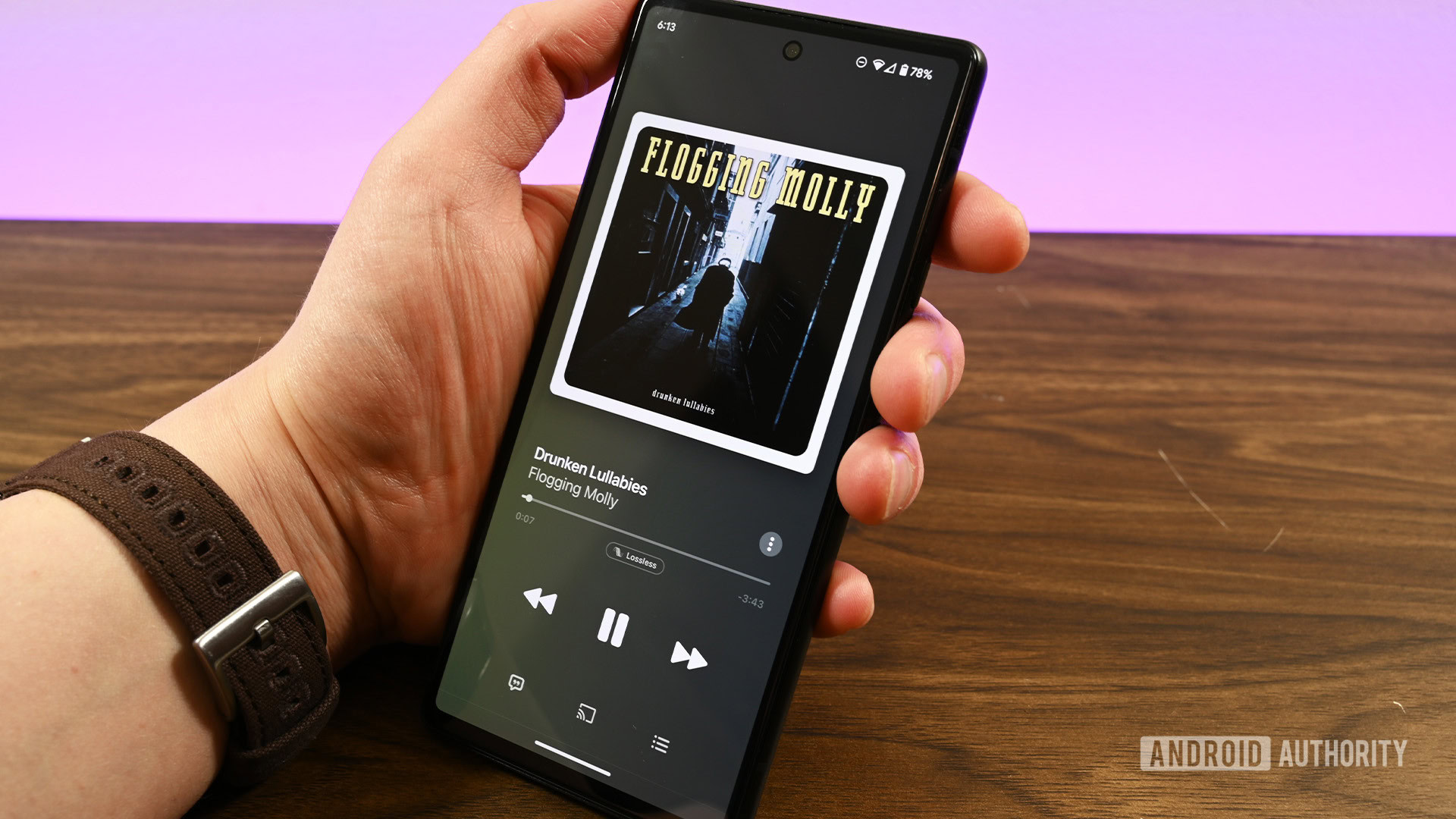
What we like:
- Good-looking UI with logically placed controls.
- Lossless audio is available without extra cost.
- You can upload 100,000 of your own songs.
- Extras, like spatial audio with head tracking, are neat.
- The music player has lyrics by default, like Spotify, which is a nice touch.
- Works on enough platforms to appease most people.
What we don’t like:
- Lacks some fun features, like collaborative playlists.
- Works way better on Apple devices than any other platform.
- It has the smallest library and the highest individual account price tag of all three services.
Apple Music is something a little bit different, and it’s grown a lot since it originally launched a few years ago. Notably, the Android version used to be awful, but Apple has cleaned it up quite a bit in recent years. The UI is pretty clean these days, with simple, logical controls that only take a few minutes to learn. When listening to music, there’s a dedicated button to view lyrics. It’s all well-packaged and presented to the end user, and we appreciate that.
We did find it lacking in some features. For example, not having collaborative playlists is a pretty big sin these days, as it removes the social element that YouTube Music and Spotify both have. Additionally, it costs an extra $1 per month, although you do get access to Apple’s excellent lossless audio with the base price, which audiophiles will appreciate.
Apple Music is easily the best choice of the three for audiophiles, and the UI has gotten a lot better as well.
In day-to-day use, Apple Music is a willing companion. Adding songs to playlists and your library is easy, and the service has a variety of radio stations and curated playlists to help bolster discoverability. It’s not quite as good as Spotify in terms of discovery features, but it’s definitely good enough. It worked fine with Android Auto as well as my Xbox Series X. There was very little drama when using it.
Perhaps the best part of Apple Music is the power-user features. On top of the lossless audio, you can also upload your own audio to the service. It does convert your audio to AAC, though, so purists may not enjoy that. In any case, you can get all of your music in one place, and that’s always a bonus. It’s a surprisingly good option, although access on Windows devices is pretty limited compared to other platforms.
YouTube Music pros and cons
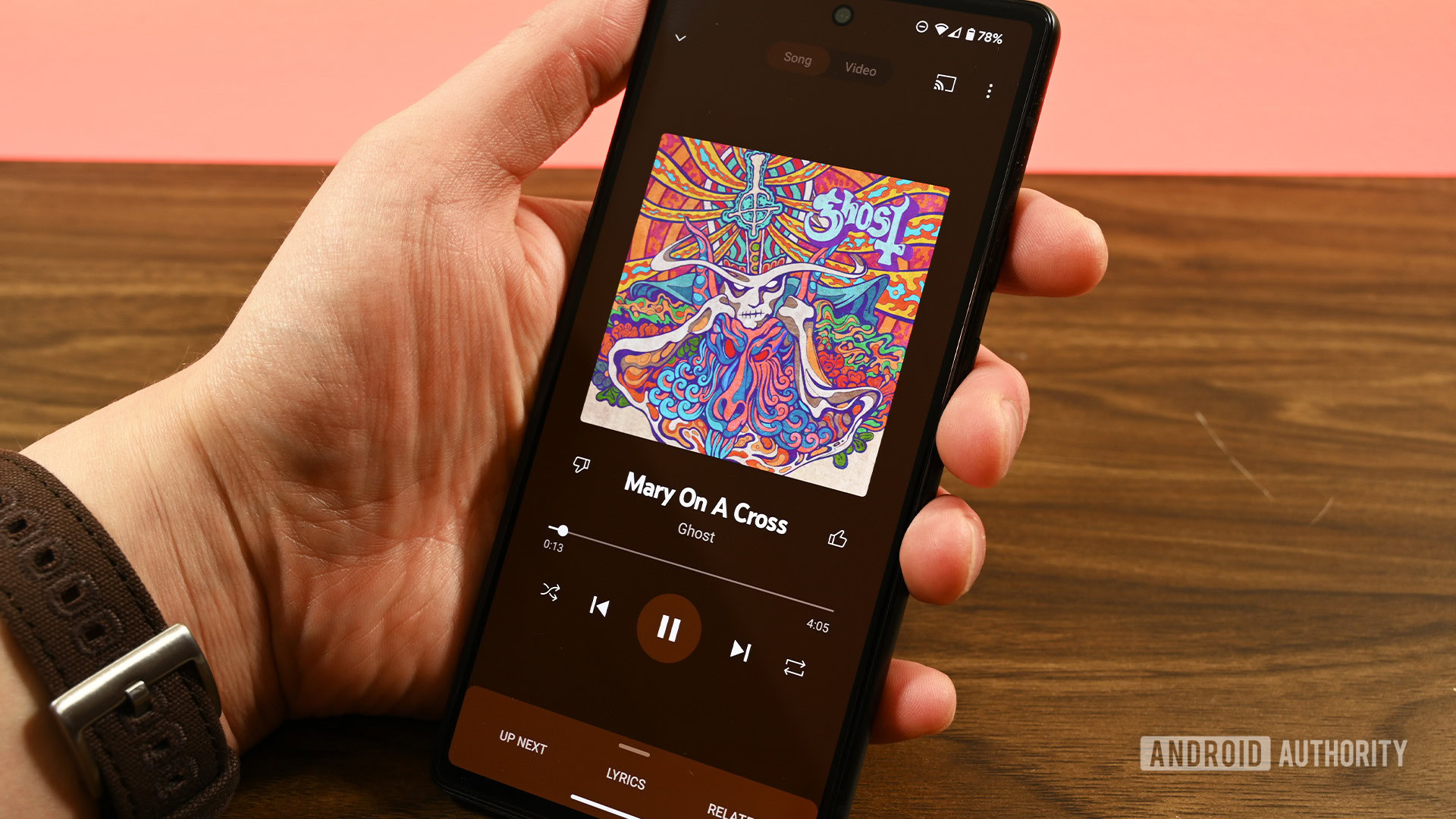
What we like:
- Integration with YouTube gives it more music choices than anybody.
- You can upload 100,000 of your own tracks to the service.
- For just $2 per month more (per person, on a family plan), you can eliminate ads on regular YouTube, making it the best value pick.
- It has a slightly better free mobile phone experience than Spotify.
- Keeps up with the Joneses with things like collaborative playlists, curated playlists, and decent discoverability features.
What we don’t like:
- Not the best audio streaming quality, with no lossless option.
- Doesn’t include spatial audio.
- The UI is the worst of the three services. The controls are laid out well, but usability isn’t as clean as we’d like.
- It has the lowest number of supported platforms, including no support for modern game consoles and limited support for smart TVs.
YouTube Music is a compelling option. Google has done an excellent job of grouping YouTube Music and regular YouTube together in order to give out one of the best value streaming plans in existence. For $11.99 per month, you get all of the features of YouTube Music and all of the features of YouTube Premium, including no ads, background play, and more. Those looking for the best value out of all three services can stop now. Spotify and Apple Music don’t come close.
In day-to-day use, YouTube Music does fine. You can search for music, add it to playlists and your library, and engage with stuff just like the others. There are curated and collaborative playlists that help you find new music, which YouTube Music is good at. You can also surf YouTube and add music to your playlists that you can’t find on other services. An example is user-uploaded concerts. There is just more on YouTube Music.
YouTube Music is the best value, but as with all value-oriented things, there are some corners cut to make it that way.
That said, using it isn’t quite as clean as the other two. The UI is clunky. There isn’t anything seriously wrong with it, but it’s just a bunch of little things. Playlist management is only mediocre. The shuffle function is objectively the worst out of all three services. Subscribing to a music artist on YouTube Music adds them to your subscriptions on regular YouTube. Your uploads are in a separate tab from the rest of your library. You get the picture, it’s just a lot of little annoyances.
Overall, though, YouTube Music is a solid choice. It’s incredibly satisfying to never view ads on regular YouTube while also getting the benefits of an entire music streaming service. We do wish the streaming quality were higher, but sometimes when you go with the value option, you make some sacrifices. As long as you can get over the downsides, YouTube Music is otherwise good enough to compete.
Which one is the best?
As per the norm with these types of comparisons, there’s a lot that comes down to preference. However, we’ll try to be as objective as we can here.
YouTube Music is the best value
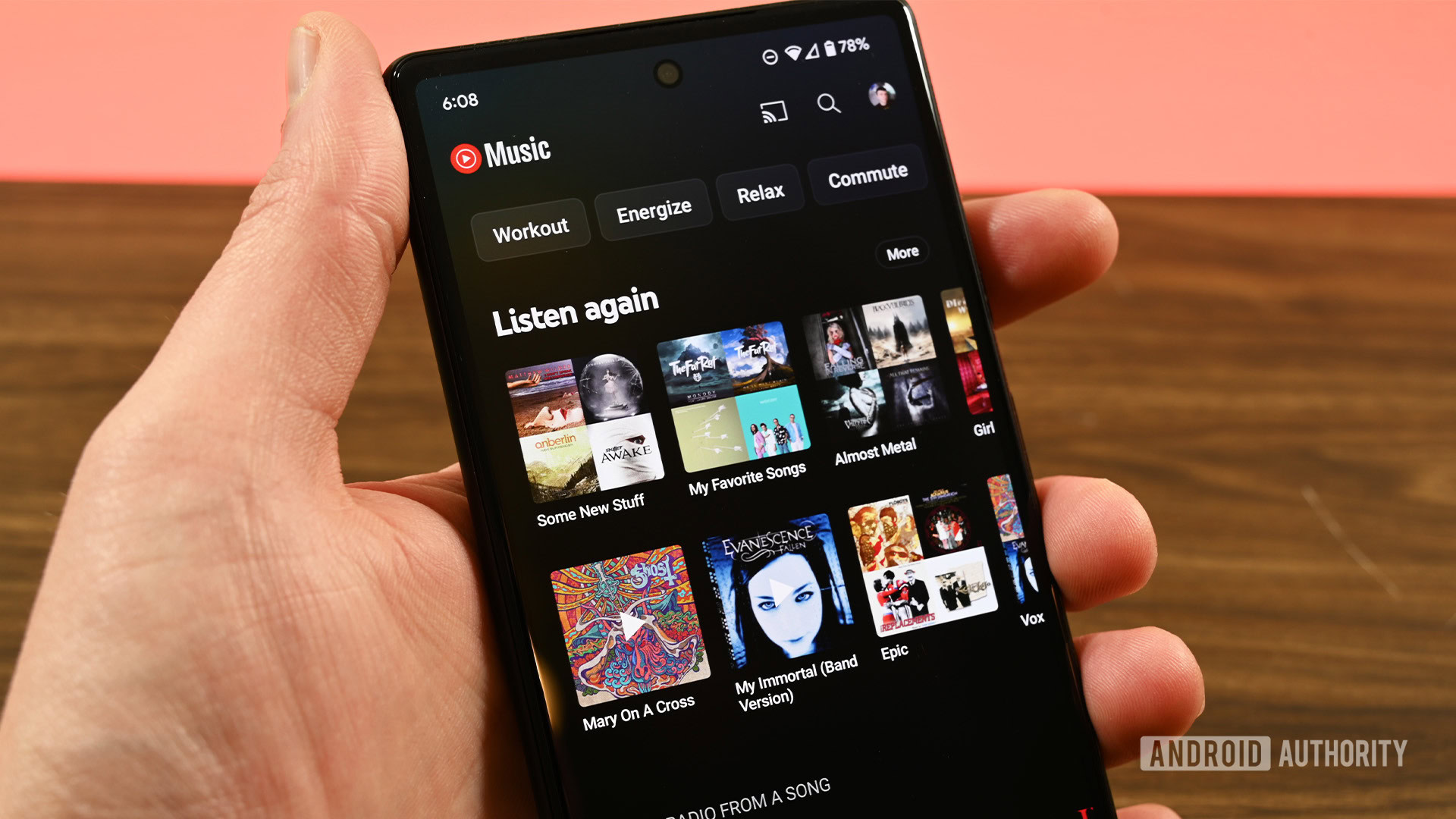
YouTube Music’s marriage to YouTube makes it a ridiculously good deal, and nothing else comes close.
- Between YouTube Music and YouTube, it has the largest library of music.
- Having no ads on YouTube videos is worth the extra $2 per month if you regularly use YouTube.
- It still has desirable features, like an end-of-the-year recap, collaborative playlists, curated playlists, and offline listening.
- The UI could definitely be better, and we’d prefer it if subscribing to an artist on YouTube Music doesn’t also subscribe to them on YouTube.
- Still, the bang for your buck far exceeds what you’d get on the other services.
Spotify is the best for ease of use and discoverability
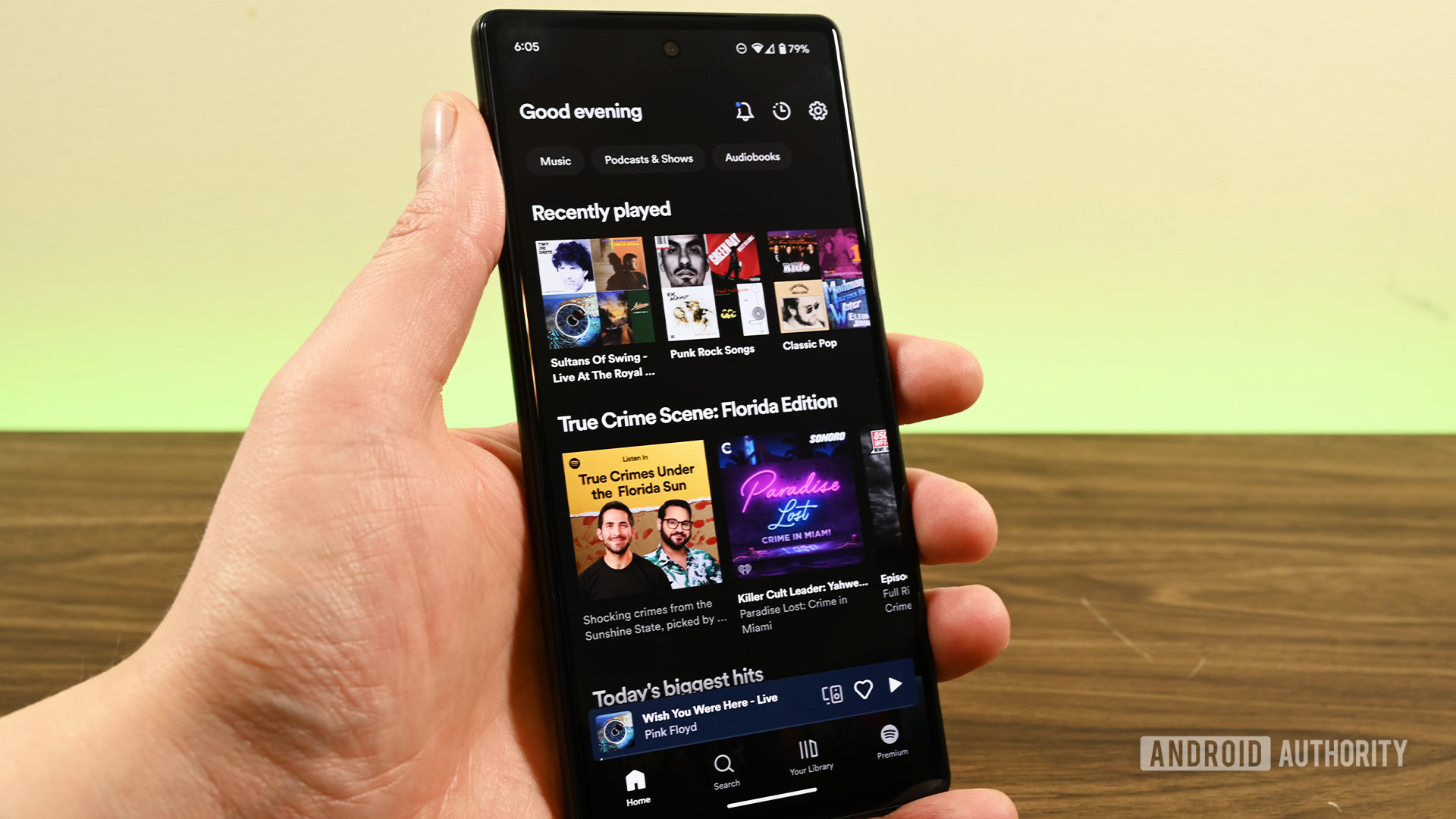
Spotify is the best choice for folks who just want their streaming service to work everywhere and find new music that they like.
- The size of the song library doesn’t matter if you don’t know how to use it. Spotify knows how to use theirs, and it’s still one of the biggest ones among streaming services.
- Discoverability is top-notch, and it still has stuff like collaborative playlists, offline listening, and radio stations.
- Podcasts and audiobooks give Spotify some depth to its content, making it a better value than services that only serve music.
- It works everywhere, including the car, smart TVs, game consoles, smartwatches, and basically anywhere else you can think of.
Apple Music is best for audiophiles
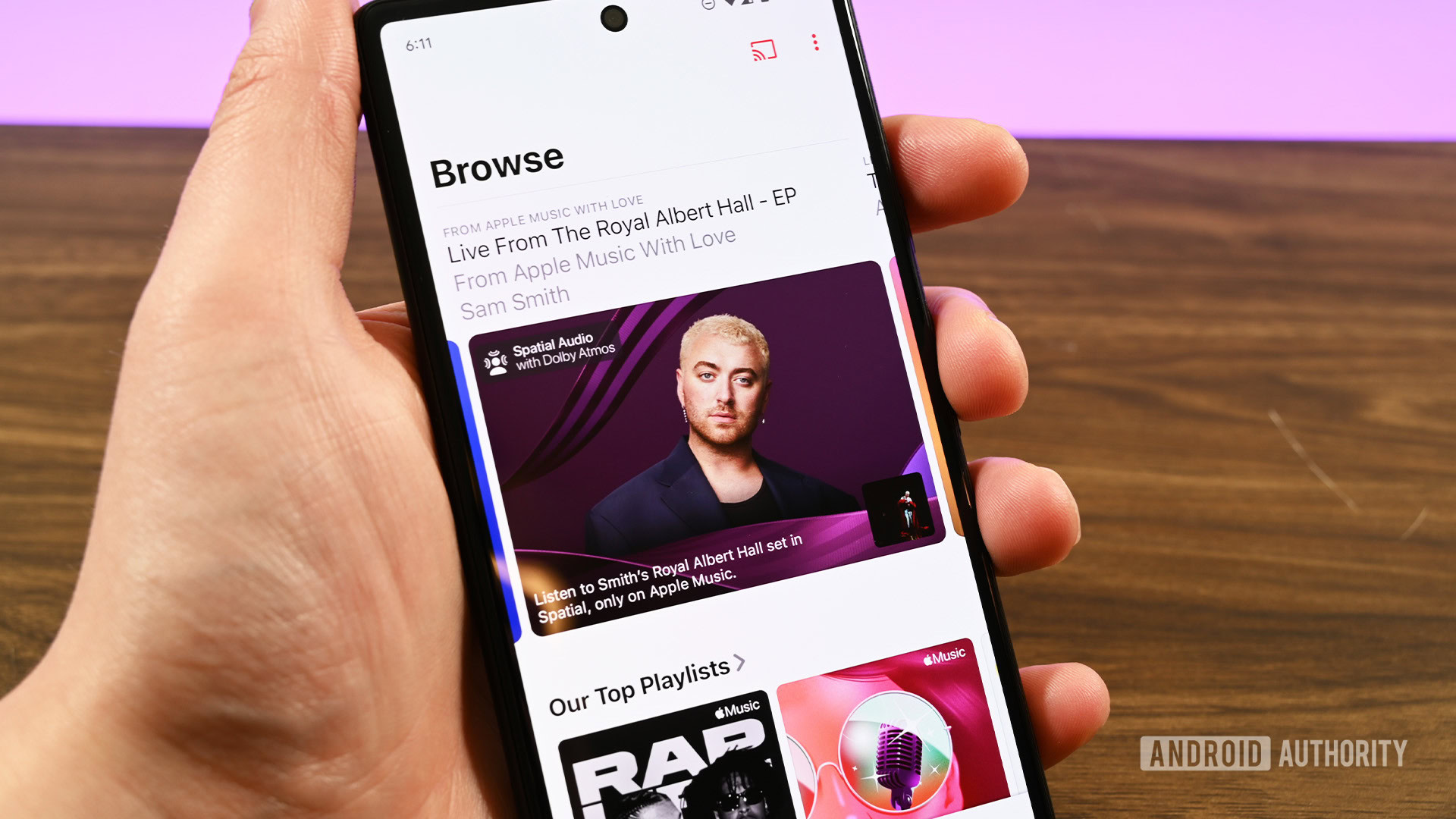
Apple Music doesn’t have the most value, but it certainly gives you a great overall experience, especially if streaming quality matters to you.
- Excellent streaming quality, and lossless audio is included in the cost of the base subscription.
- It lacks collaborative playlists, but it otherwise keeps up with features like spatial audio, uploading your own tracks, curated playlists, and radio stations to discover new music.
- It’s not on as many platforms as Spotify, but it’s still available on many more platforms than YouTube Music.
- It’s subjective, but I think the UI looks nicer than the other two. Spotify is functional but somewhat dated, as is YouTube Music. Apple Music’s presentation is better.
FAQ
All three services can be set to use as little data as possible. However, since it does include lossless audio, Apple Music will most likely use the most data if set to always stream at max quality.